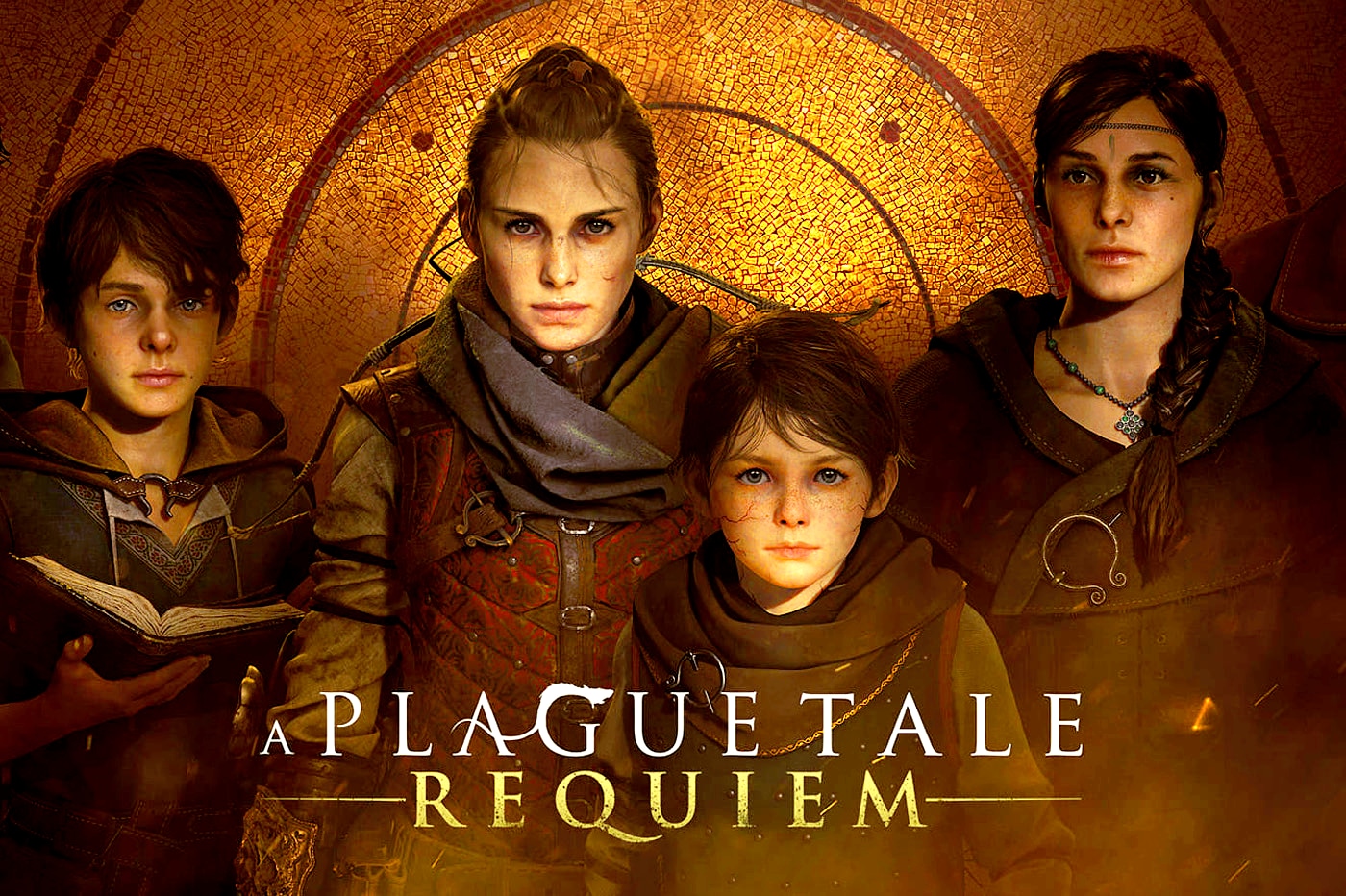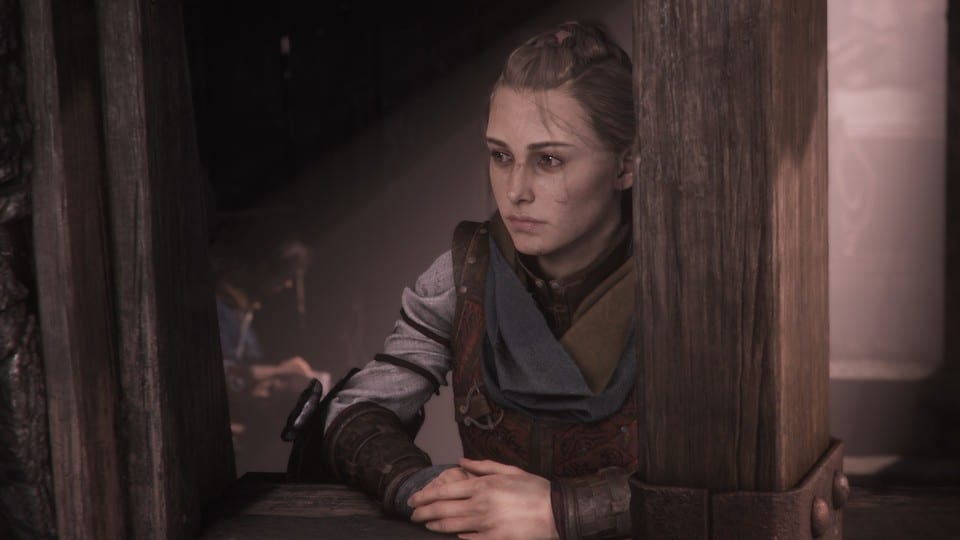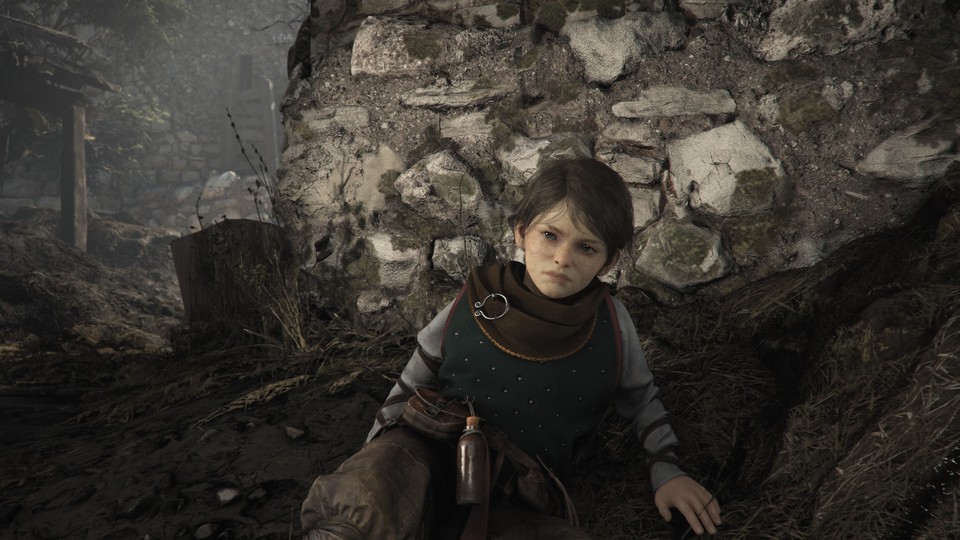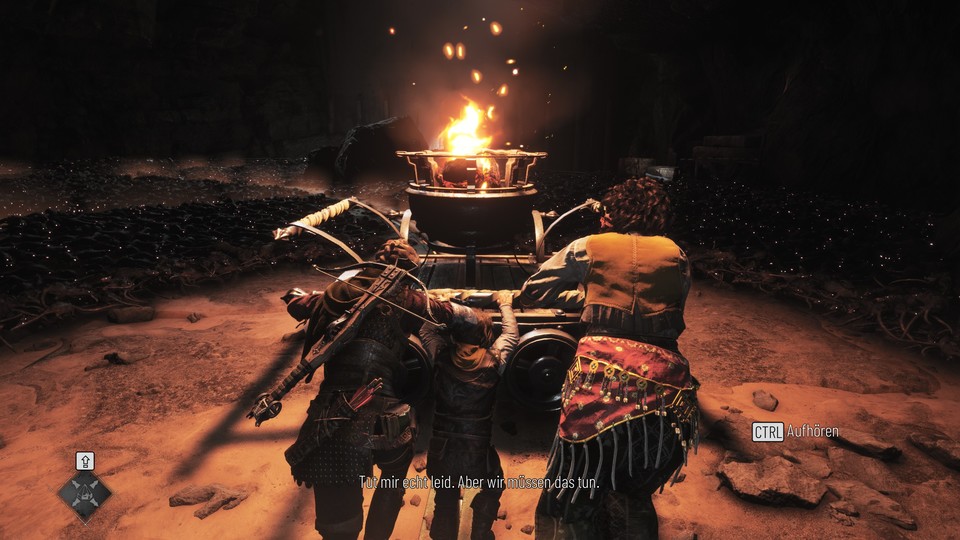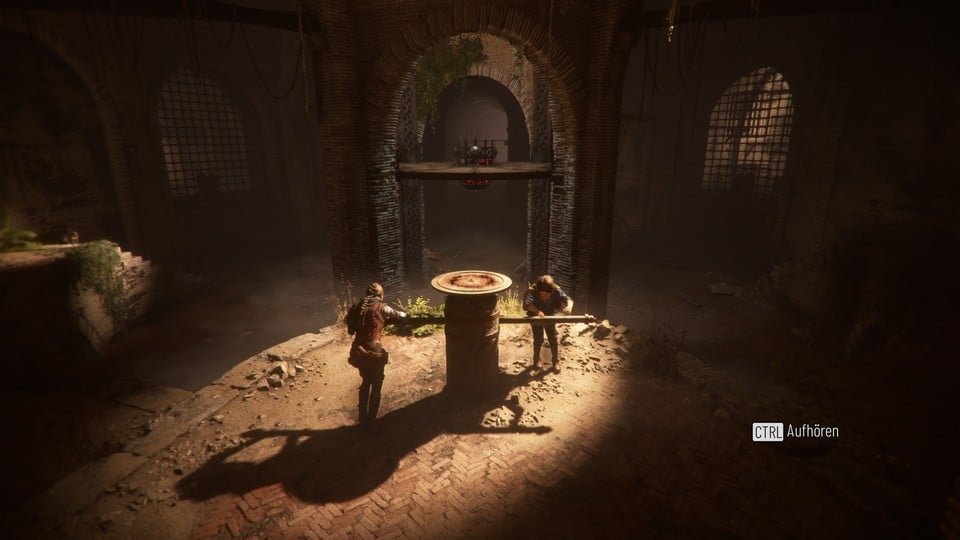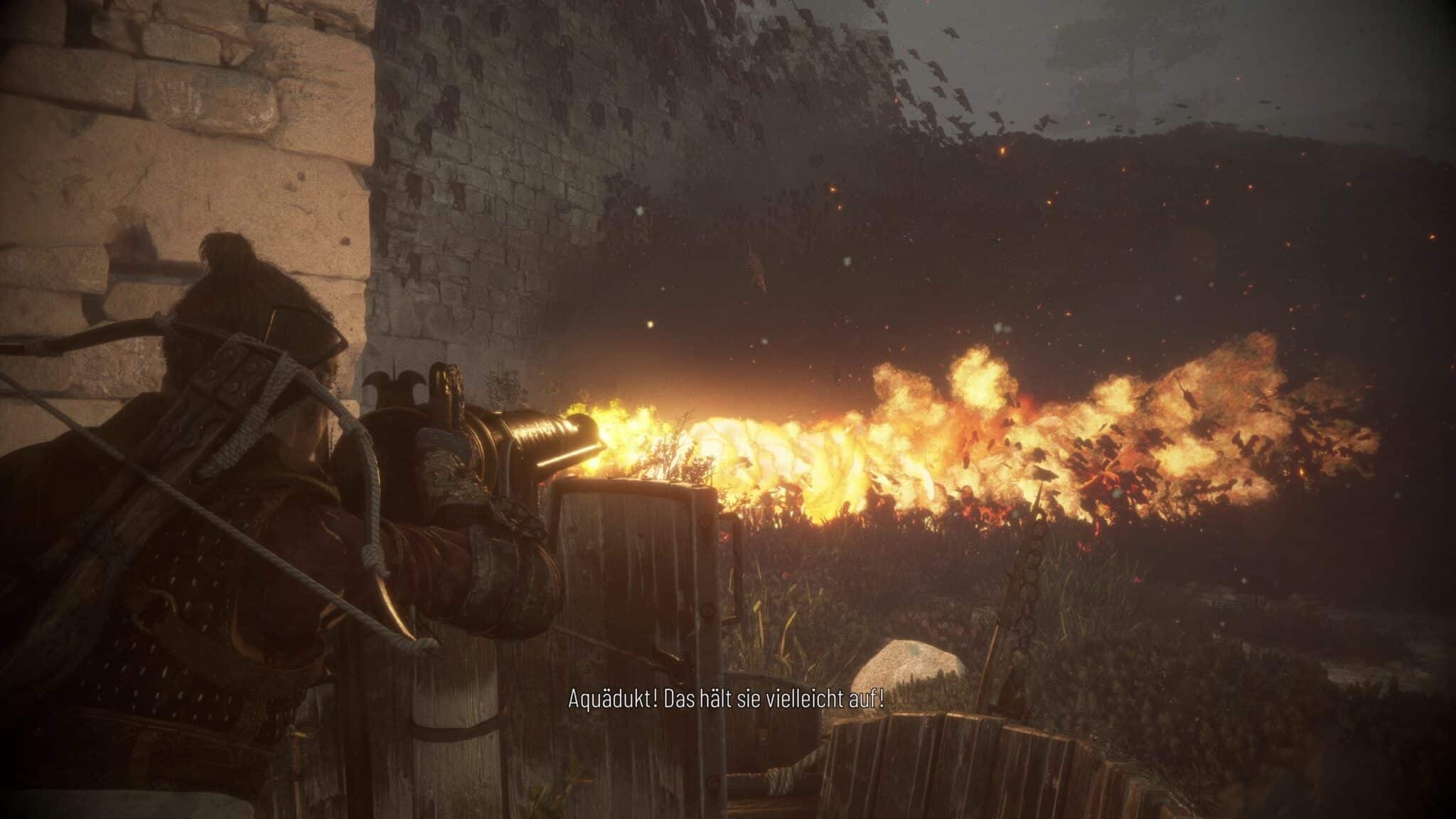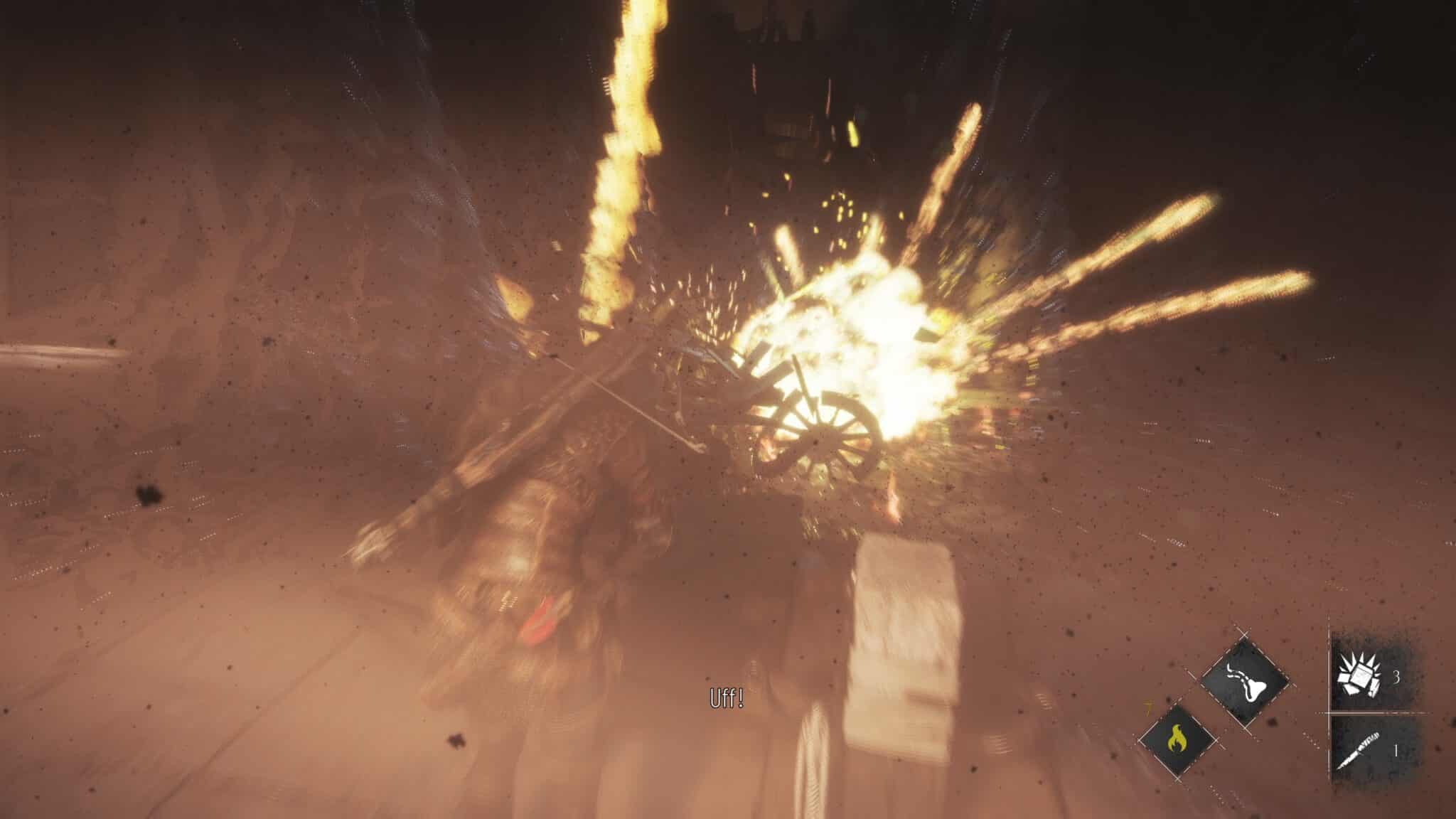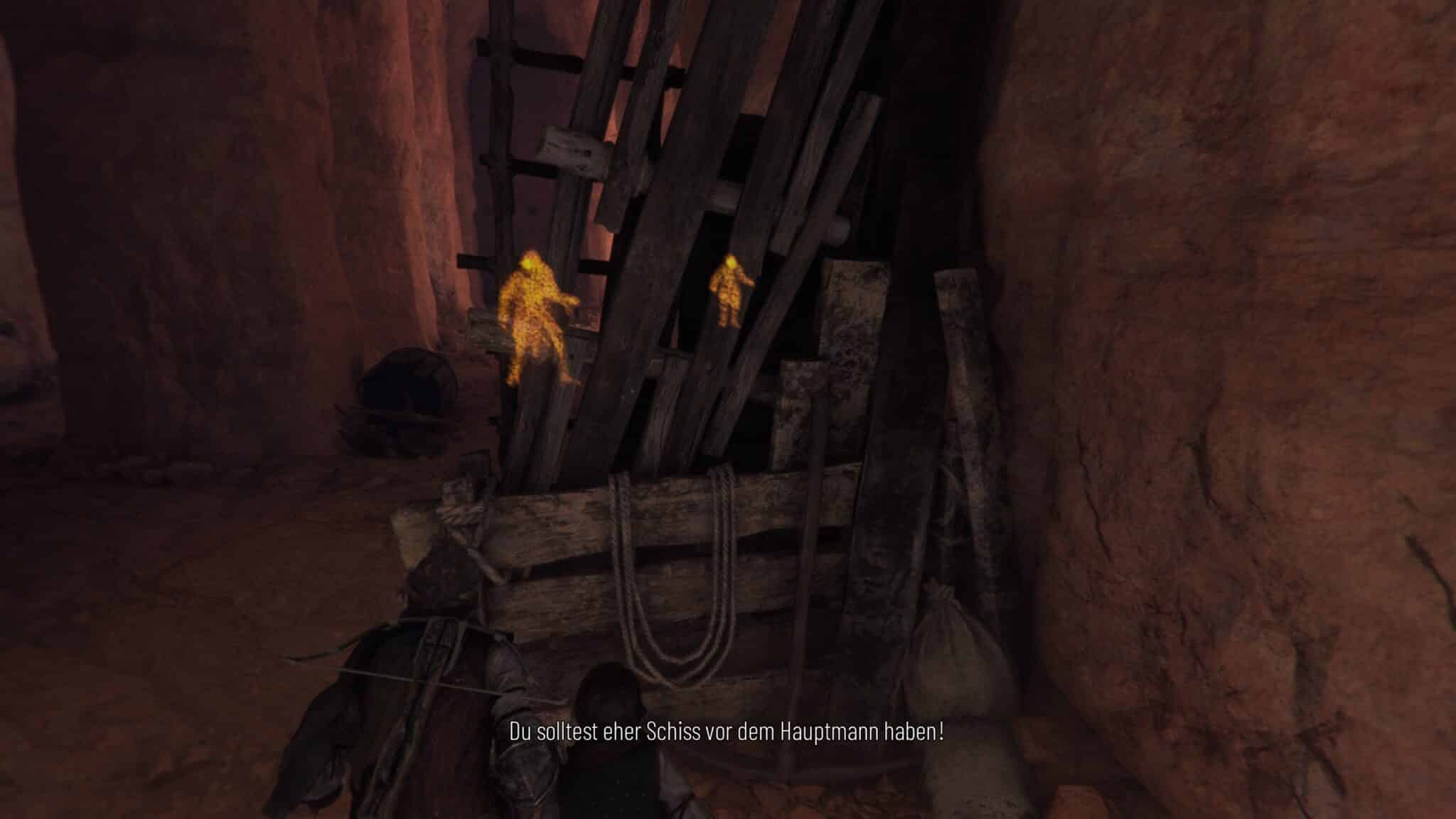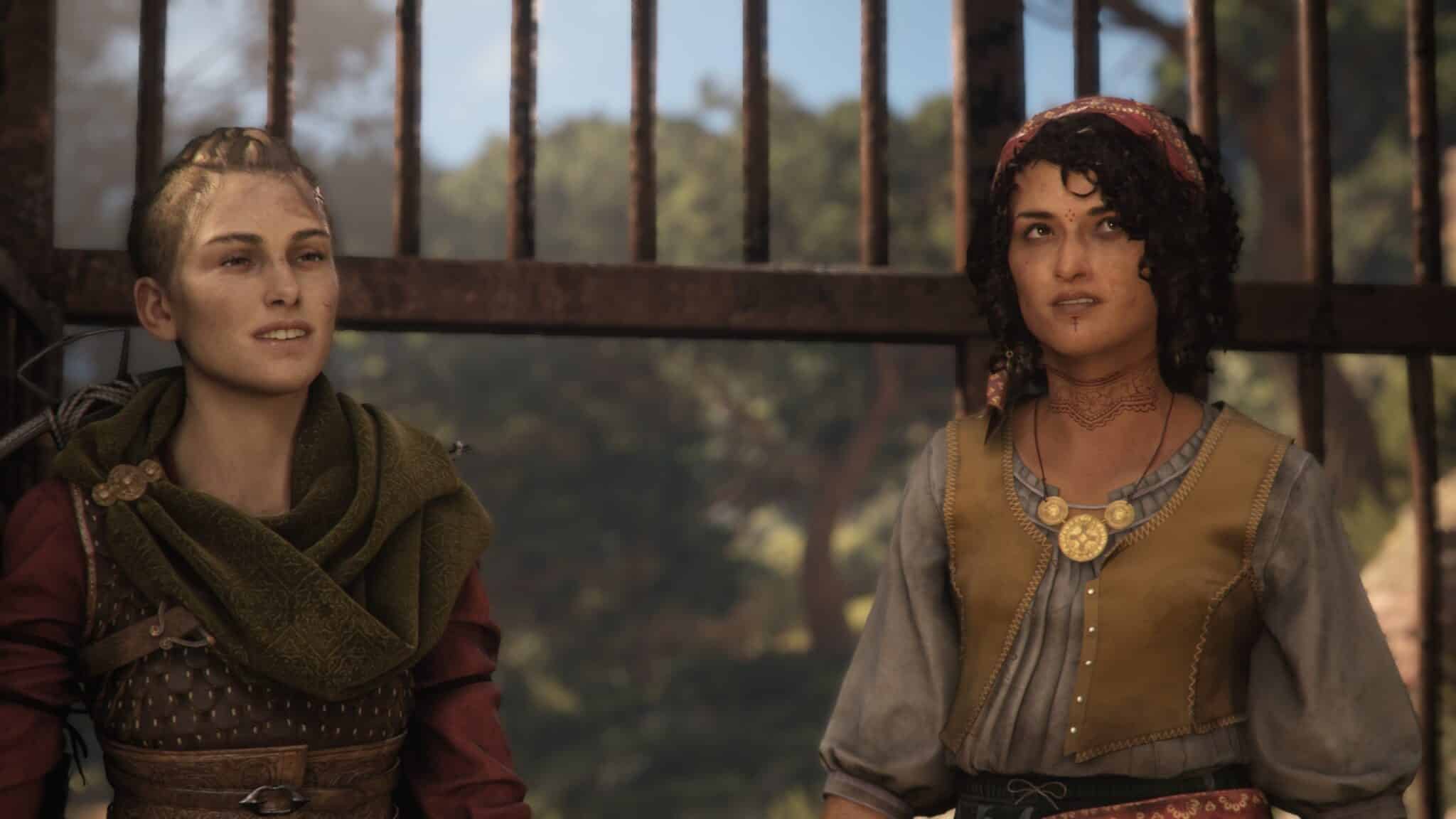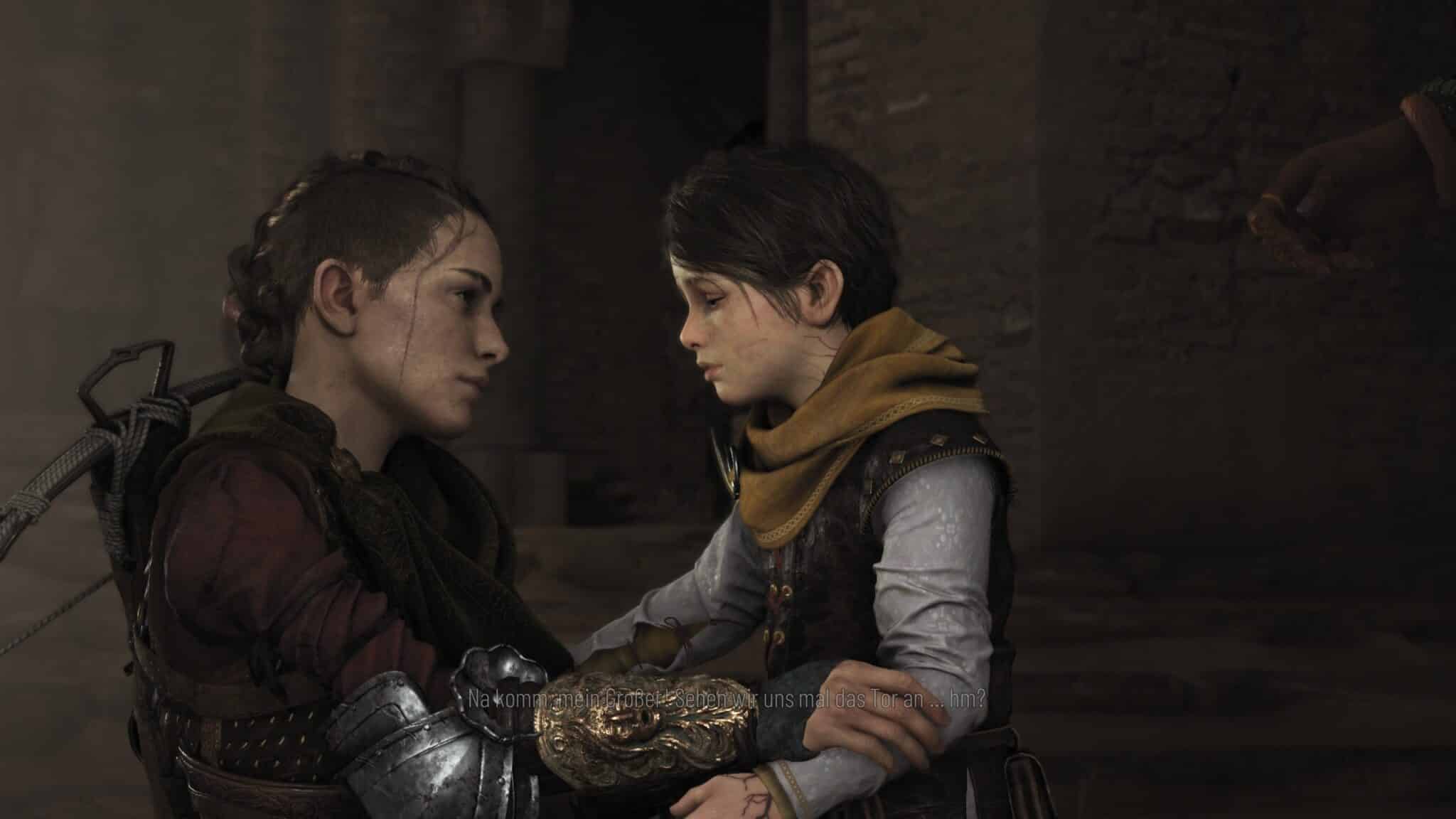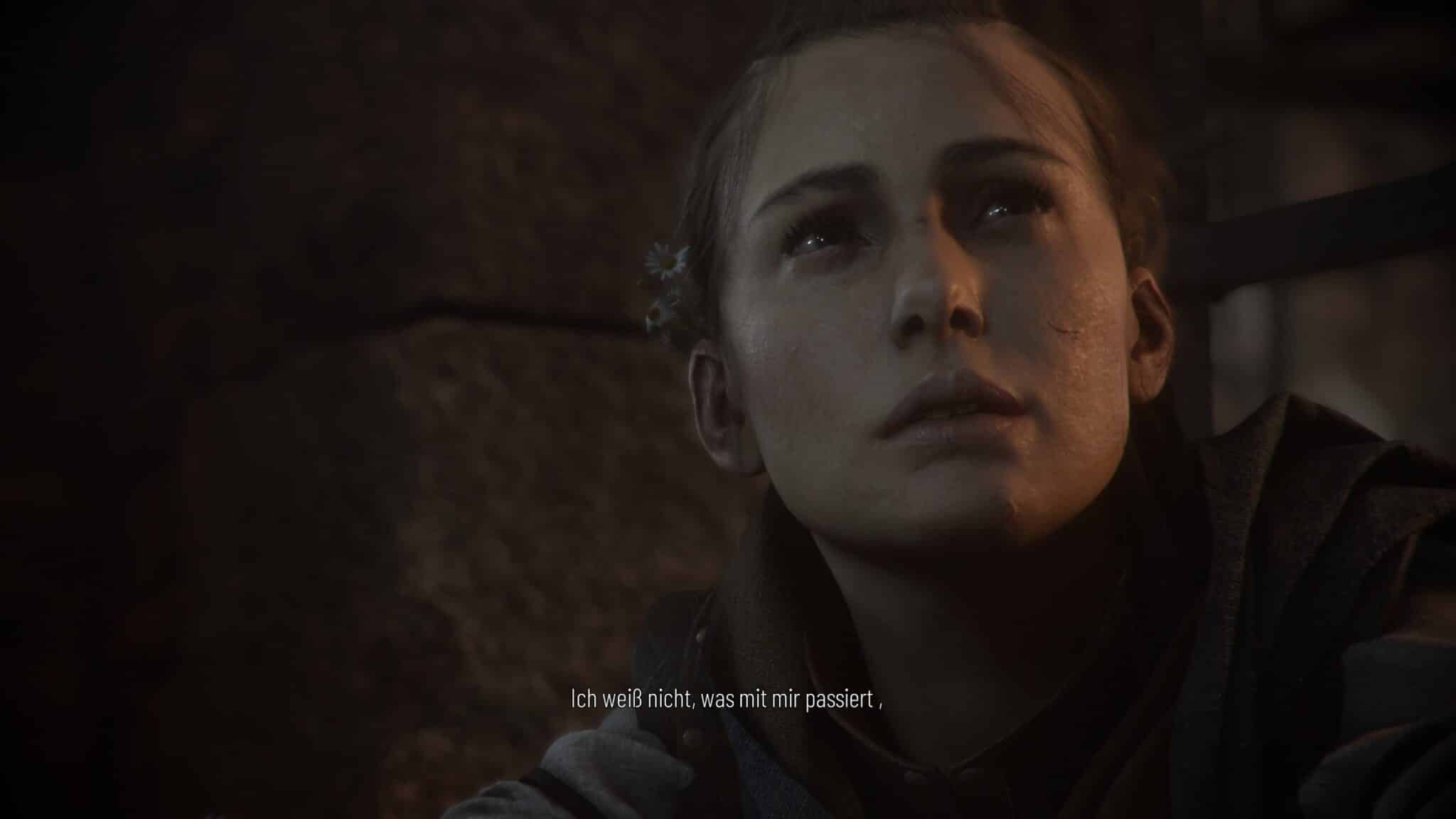The sequel to the surprise hit A Plague Tale: Innocence takes us on an emotional horror trip that”s too good to run screaming away from.
Three years after the highly acclaimed A Plague Tale: Innocence, French developer Asobo Studios invites us to continue our fierce fight for survival with two beloved characters, Amicia and Hugo. A Plague Tale: Requiem wants to go the extra mile technically, mechanically and narratively, but falters slightly in its own parade discipline.
While the first part made up for the game”s shortcomings with its emotional and gripping story, this time it is the much more mature gameplay mix of sneaking, crafting and exploring that consoles us over the small narrative flaws. Why this still results in a higher rating in the end, you can read in the test.
Table of Contents
From the South
The plot picks up almost seamlessly from its predecessor: 14th-century France is still recovering from a plague-bringing rat infestation that has already killed countless and is seemingly triggered every thousand years by a bearer of noble blood.
What had last happened in the time of the Eastern Roman Emperor Justinian was now being repeated due to the mysterious disease that Amicia”s brother Hugo has carried since birth. Only by a hair”s breadth was she able to save him from the sinister intentions of the Inquisition and contain the disease.
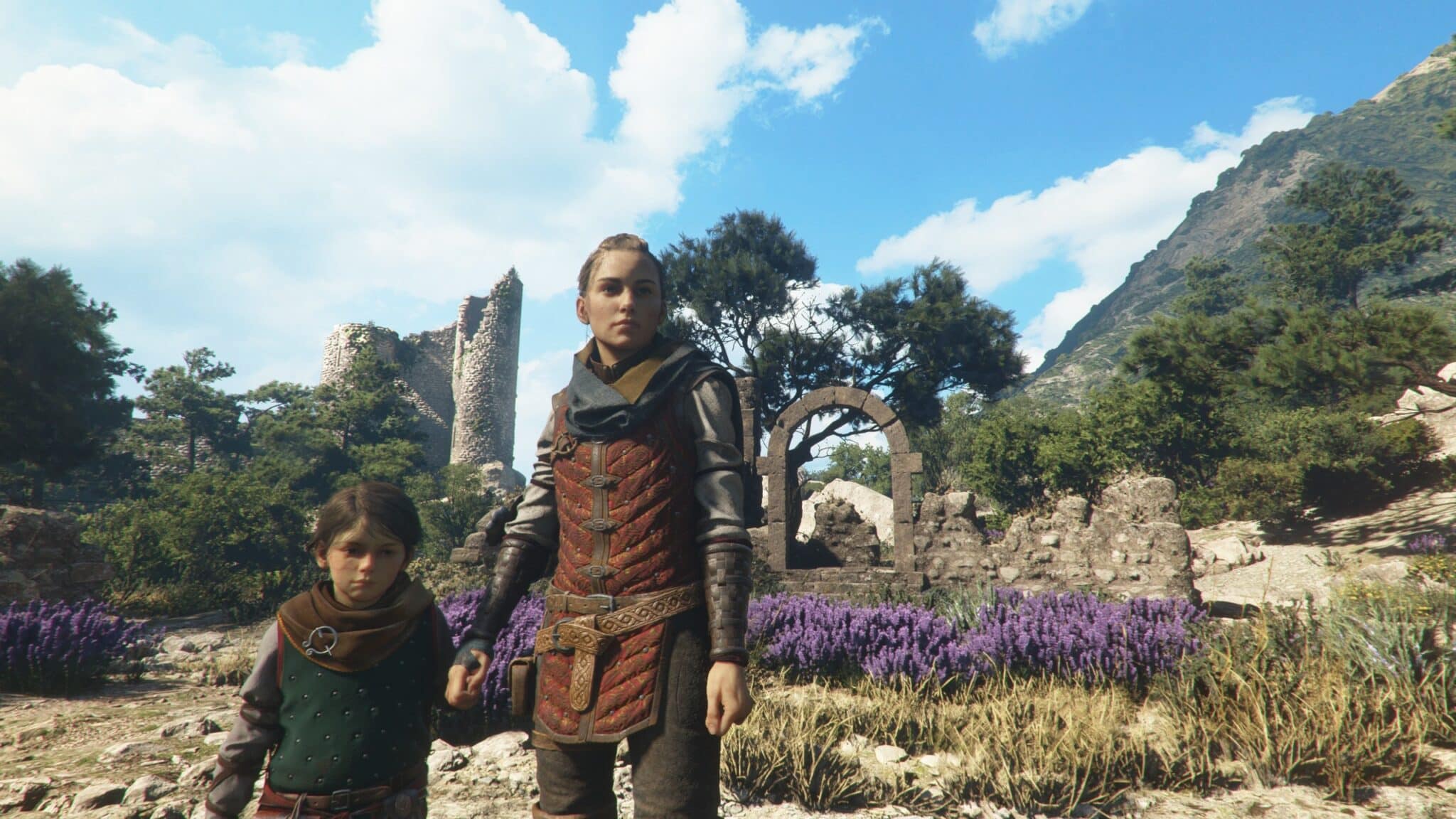
Drawn by the terrible experiences in Guyenne, Amicia, Hugo, her mother as well as their alchemist apprentice Lucas leave their ancestral homeland and finally reach Provence in the south of France after a long journey.
Despite her still youthful age, we notice that the protagonist Amicia has grown up considerably and become more serious. The two younger members of the group have also left some of their childishness behind them.
Ordinary Healing
Thankfully, the action-adventure takes the time at the beginning and at regular intervals to explore the intimate bond between Hugo and his big sister. Thanks to the outstandingly sensitive narration and carefully scattered tutorials, even those who start the new adventure without any previous knowledge are picked up.
At the beginning, Hugo”s mother places all her hopes in the experience and wisdom of the ancient order of alchemists to free her son once and for all from the plague-bringing macula in his blood. However, Amicia is sceptical of the Order”s methods and begins to believe that Hugo”s recurring dream of a healing island spring may be his only salvation.

When the Order is unable to stop the return of the massive swarms of rats, now much more impressive thanks to new technology, the two embark on a long and arduous search for the mysterious island and its secret.
A feast and horror for the eye
On the road, the significantly enhanced graphics regularly seduce us to pause and marvel. Even without ray tracing activated, the extremely varied and highly detailed locations with their grandiose lighting moods are impressive.
Note: Ray tracing was still missing in our test version and will be added with a Day One patch. Otherwise, the game was in excellent condition: we encountered neither bugs nor technical defects.
Happily, the game always leaves us room to enjoy and relax. Breaks that we can make good use of, because the next mass grave or other horror scenario is usually only a few metres away. Rarely have dreamlike holiday panoramas and nauseating horror met so sharply.
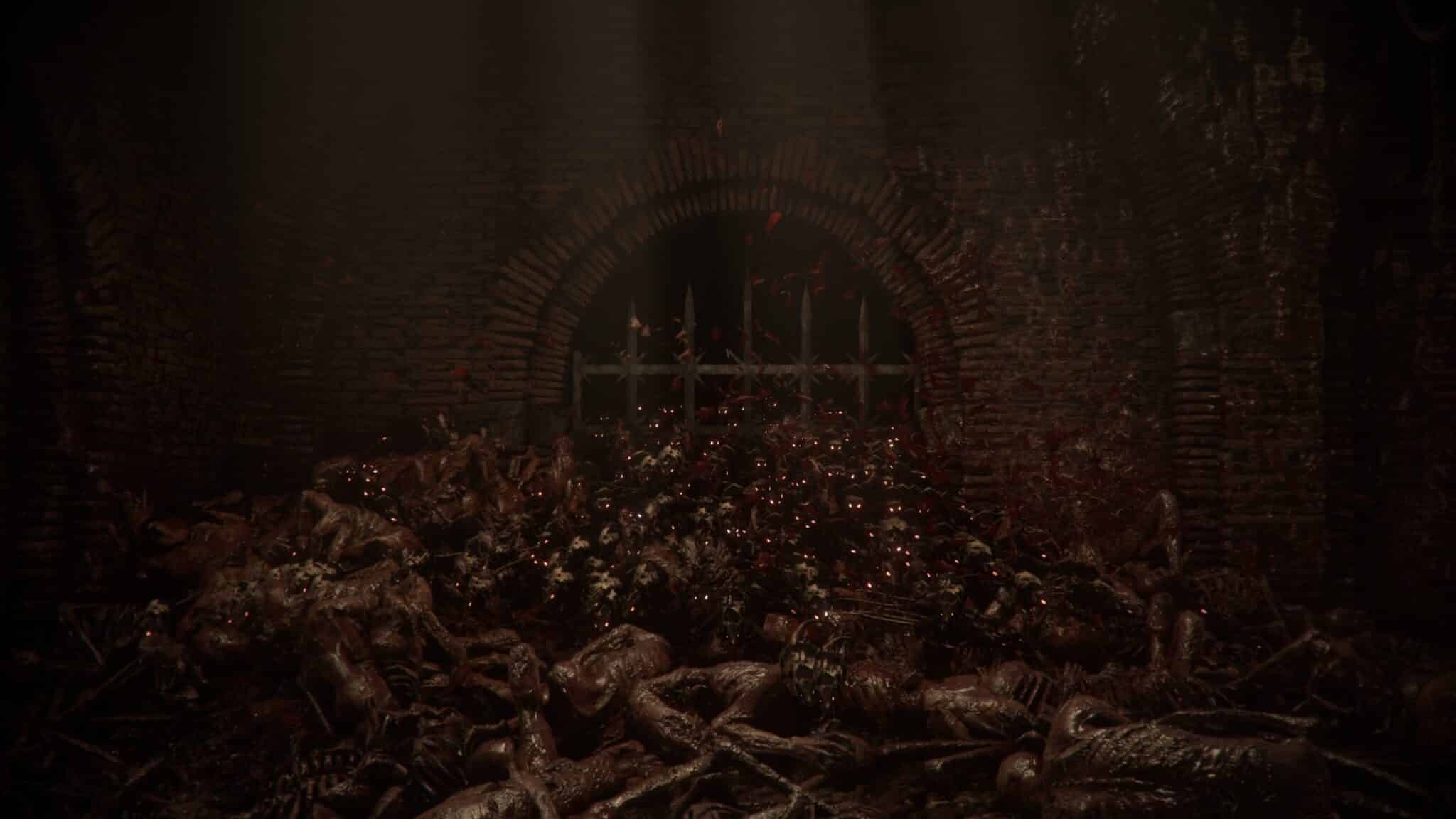
Reason enough for Amicia and Hugo to periodically reminisce about childish joy (the game”s optional collectibles) and distract themselves from their grim situation for a moment. Nevertheless, even in quiet moments a sinister foreboding settles in the back of our minds, causing a further compression of the atmosphere.
Where just a moment ago there was childish laughter while rocking, in a matter of seconds everything can be overrun by soldiers, bandits, slave traders or man-eating rats. Then the two have no choice but to make their way through all adversity and creepiness with the help of the pleasantly developed gameplay mechanics and equally striking and competent new companions.
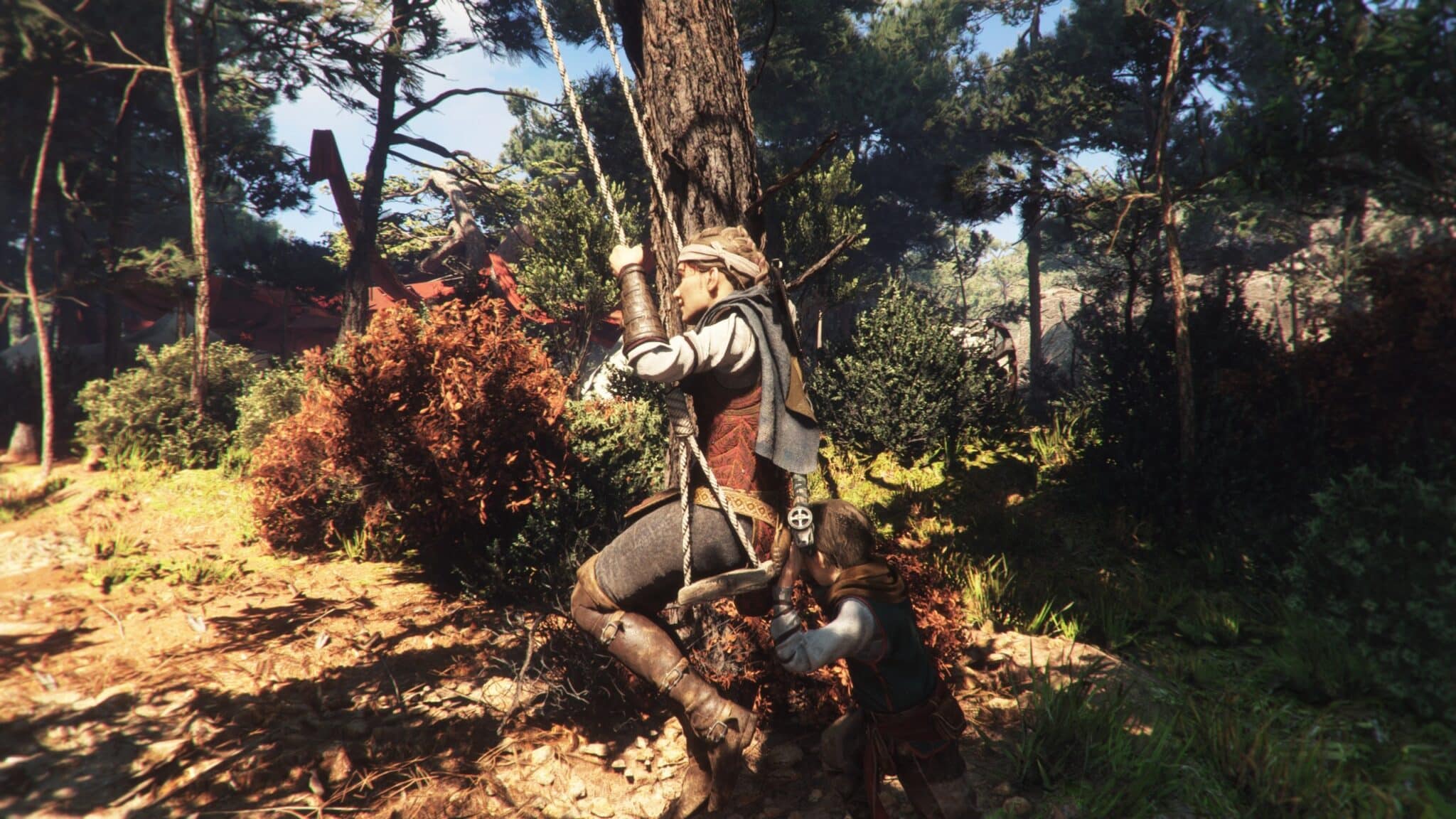
Old and new friends
At this point, the developers deserve special praise for those very companions, at least one of whom is almost always at Amicia”s side. Not only do we grow fond of them in no time thanks to the superbly chosen dubbing actors and believable dialogue, they also each have an extremely useful special ability that we can use at any time at the touch of a button.
While Hugo can occasionally direct rats and make enemies visible through walls, Lucas briefly befuddles them with his Stupefacio powder. Warrior Arnaud is superior to any adversary in direct hand-to-hand combat and the cunning pirate Sophie has a powerful prism in her possession with which she can ignite grasses as a distraction or create a protective cone of light in whose glow we are safe from the rats.
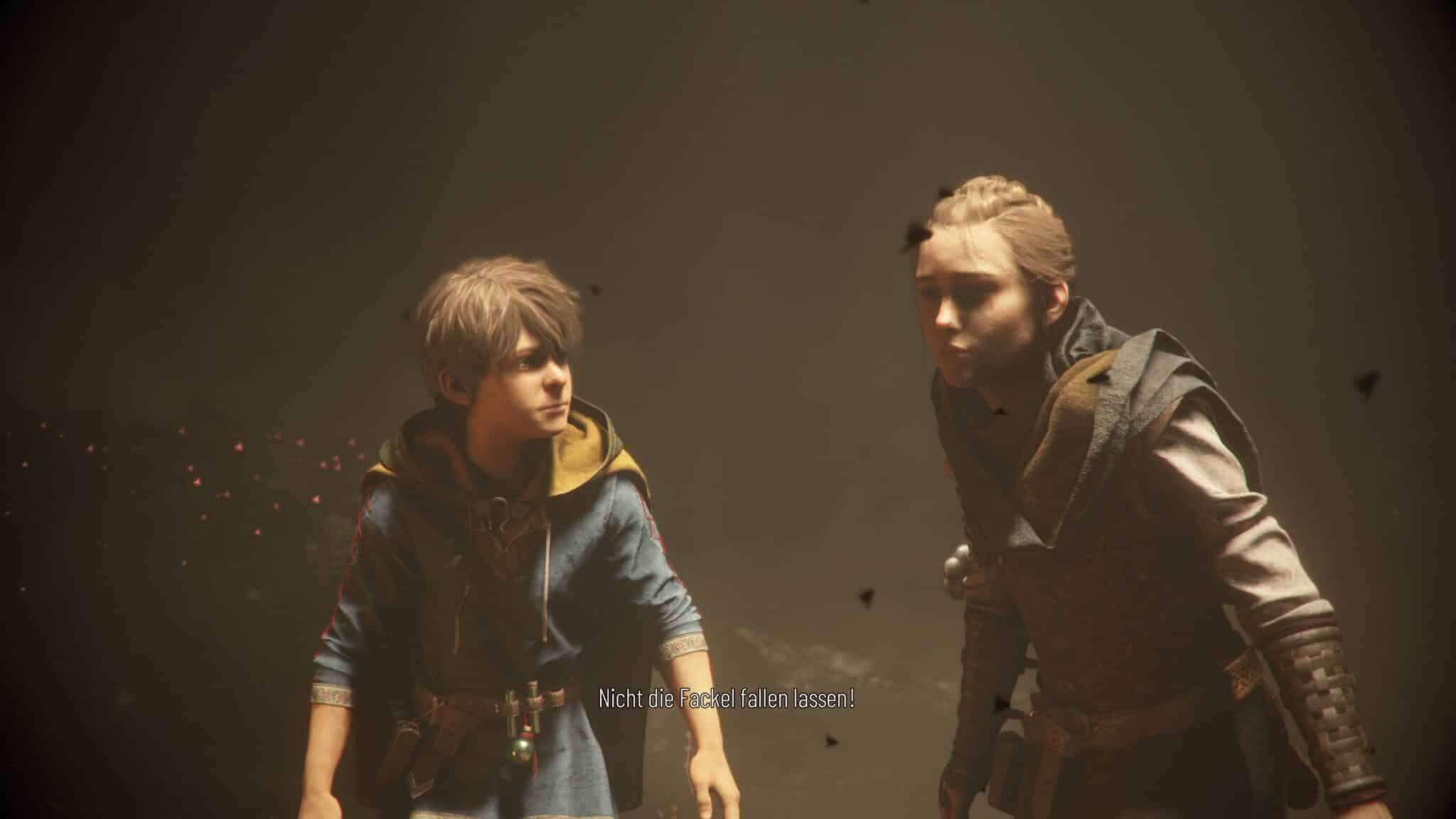
But the most important distinguishing feature that sets these four apart from almost all the companions in other games is this: They”re not complete morons for a change. We don”t have to wait for them, they never get in the way and when they open their mouths on the way, they actually regale us with useful hints or atmospheric anecdotes.
To prevent the companions from becoming overpowered in battle, both their and Amicia”s abilities have cleverly chosen advantages and disadvantages. For example, if Arnaud wedges with a guard, the clanking of swords and armour causes so much noise that it can attract other enemies nearby. Against two or more, even the infamous Wall quickly loses out.
Sneaking is the key
Even on the “normal” of three difficulty levels (four once you”ve unlocked New Game Plus), the human adversaries are so clever and observant that it”s often wisest to avoid confrontations altogether.
Because right into the last third of the game we are often confronted with more opposition than we can defeat with our meagre resources. Even if we only want to thin the ranks discreetly in order to get through more easily, this has to be carefully considered.
If a dead person is discovered, the now alarmed comrade spreads his paranoia like wildfire over the entire chapter section. This creates an additional incentive to sneak through the levels as non-violently as possible, otherwise the genre-typical learning of NPC routines is passé.
In addition, we must not make the same rabble-rouser suspicious too often with noises or movements. By the third unusual occurrence at the latest, no one believes in coincidences any more. As the game progresses, the level of difficulty increases, but to compensate, our room for manoeuvre also grows.
A Plague Tale: Requiem teaches us new mechanics in a wonderfully casual and masterful way in almost every one of the 17 chapters. Here, one exciting ammunition type, environment variable or enemy weak spot follows the next. In occasional action passages, we even get to give tinder with permanently mounted ballistae and flamethrowers.
Breathless through the sea of rats
When the cones of sight of three guards intersect so closely that we have just two seconds to scurry from one cover to the next, it creates an incredibly addictive gameplay.
Thanks to checkpoints that are always fairly set, fast loading times and the division of the levels into manageable sections that are usually separated from each other by lockable doors, trying out different approaches is made easier. Depending on the play style, however, this trial-and-error joy of design also harbours potential for frustration.
Once we have successfully negotiated a nerve-racking passage, we involuntarily breathe a sigh of relief just like the heroine Amicia when she pushes the heavy iron bar forward. A circumstance that can create additional immersion if we let ourselves get involved.
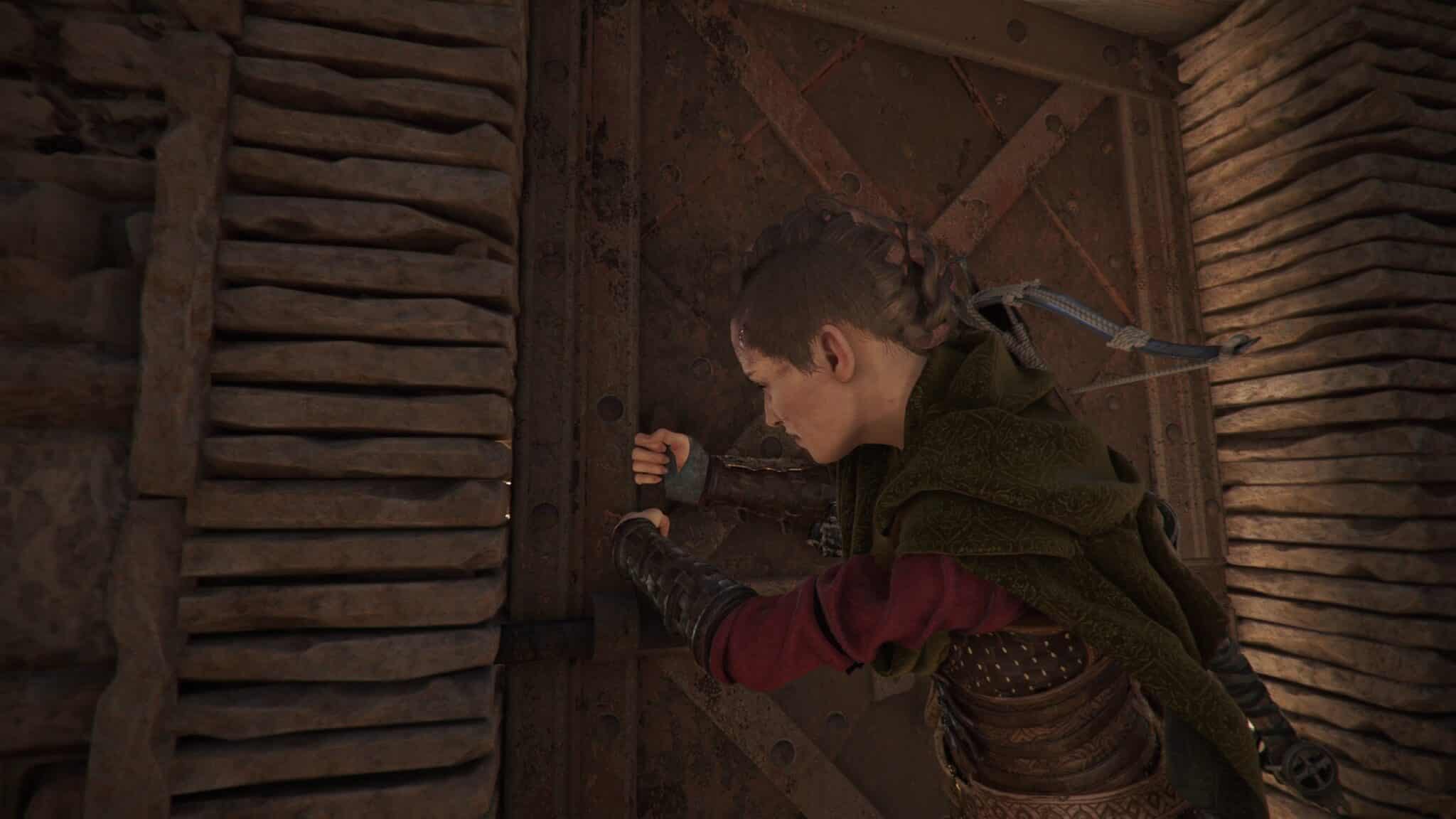
The seas of rats, on the other hand, which are almost iconic for the series, are to be understood less as an enemy and more as a puzzle element. Through the skilful use of fire and later attractants, we open up previously blocked paths. Otherwise, the game is content with simple sliding puzzles that are hardly worthy of the name.
Things get tricky when we create noise while manipulating our environment and attract the unwanted attention of human enemies. Of course, it would be easy to extinguish their light sources with our Extinguis powder and thus expose them to the squealing horde, but as already mentioned, this can conjure up a whole cascade of new problems.
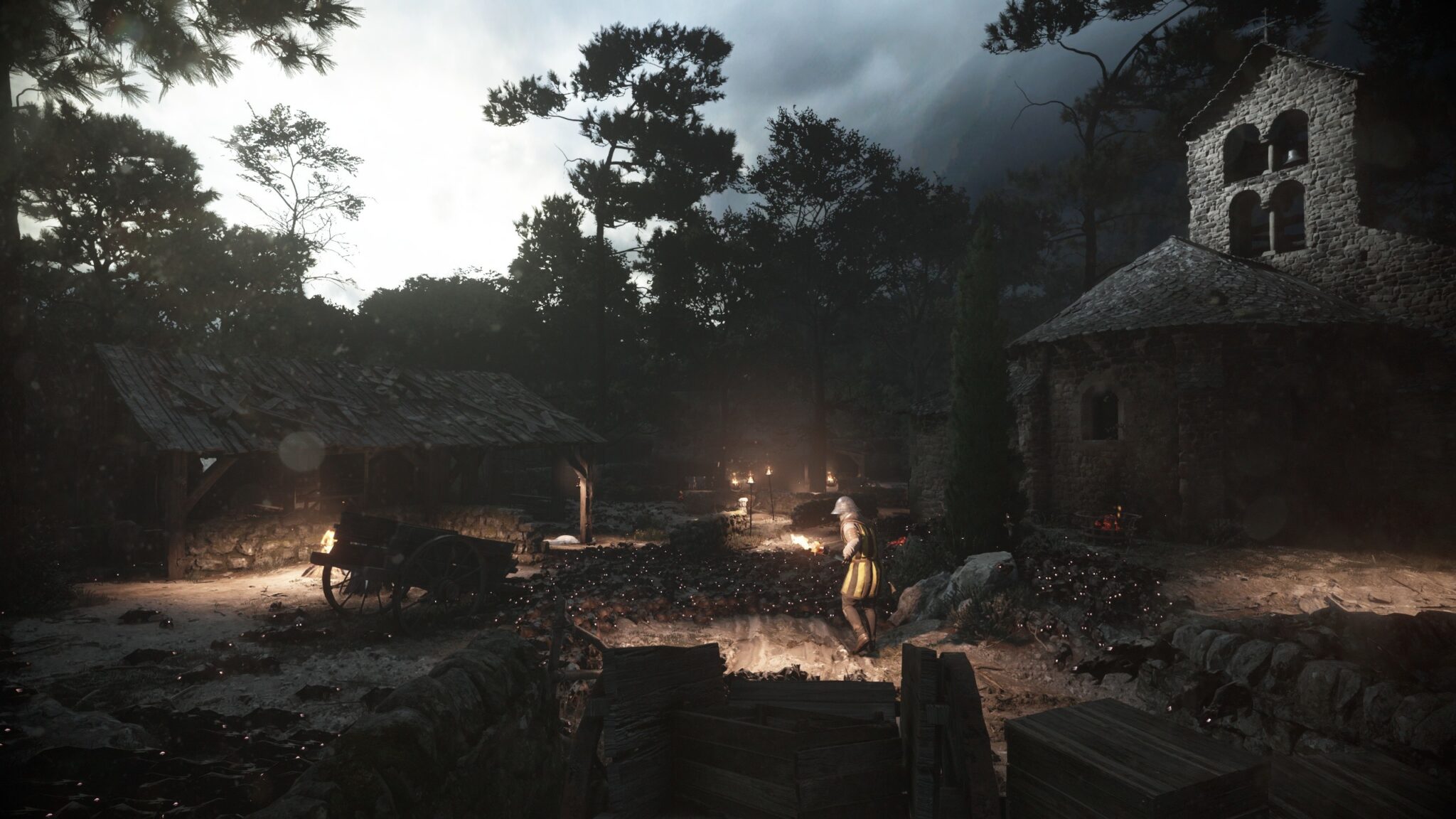
Alchemy makes everything better
The handling of Amicia”s arsenal of weapons has improved enormously compared to its predecessor. Using the clearly arranged radial menu, we select either her throwing arm, her trusty slingshot, the fillable ceramic pots that function as grenades, or the brand new crossbow. With the Q and E keys we switch quickly between regular and alchemical ammunition.
The latter is not only a nice gimmick, but an indispensable instrument in numerous puzzles and battles. It is divided into four types: Ignifer starts fires, Extinguis extinguishes them. Tar makes surfaces combustible and intensifies existing sources of fire. Finally, Odoris is a rat attractant that causes the nearest group of rodents to briefly sprint to the hit spot.
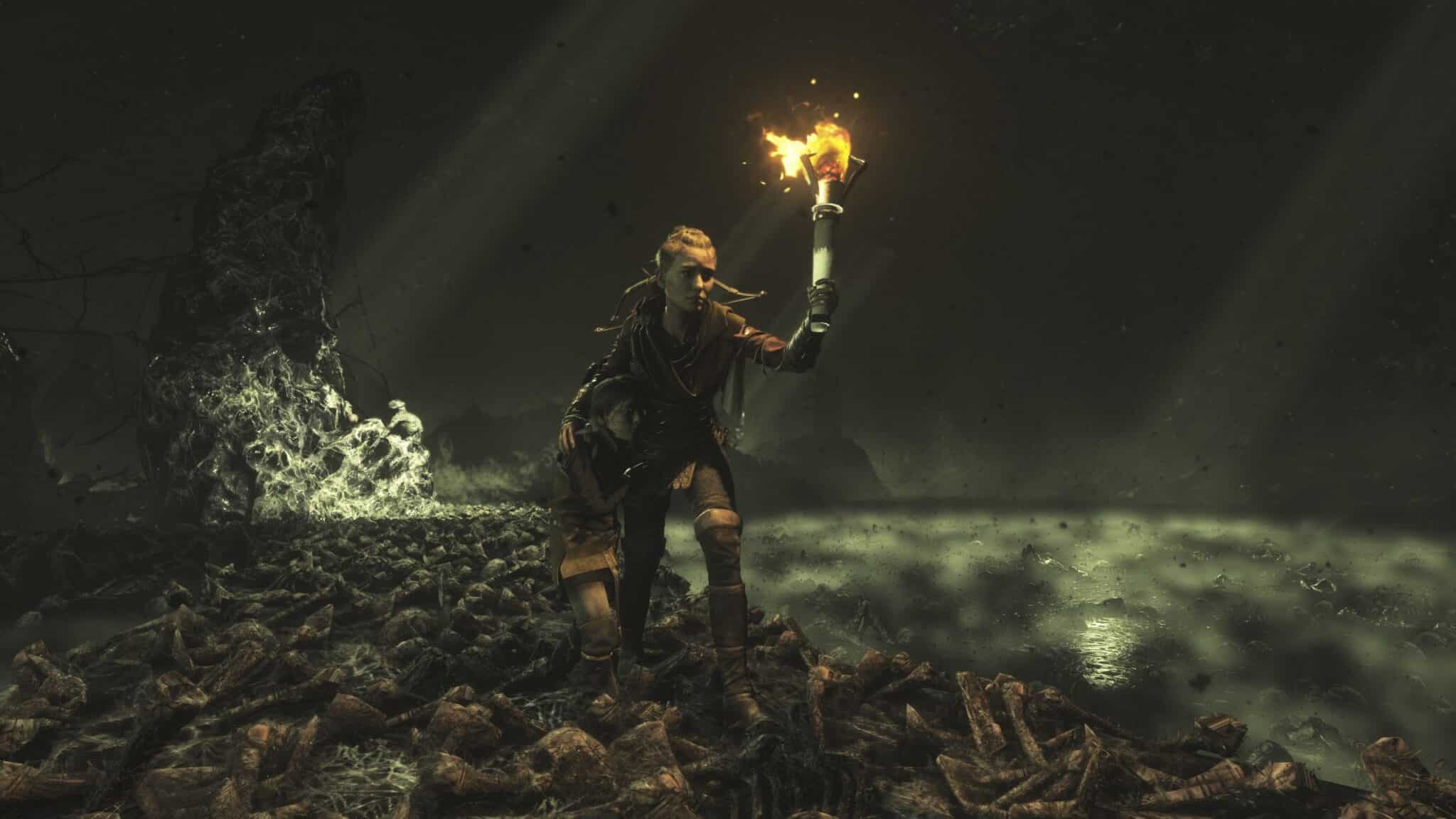
Or let”s say briefly in three out of four cases, because the beauty of the crossbow is that the alchemically modified bolts have their effect permanently. The pointed projectiles are correspondingly rare and valuable, and are also one of the few ways to take out the many helmeted enemies who are immune to Amicia”s slingshot.
The useful powders are made from two of five raw materials each, which are randomly distributed among the numerous sometimes more, sometimes less hidden crates in the game. The amount of collectable ammunition and raw materials is initially very limited. You can remedy this by crafting.
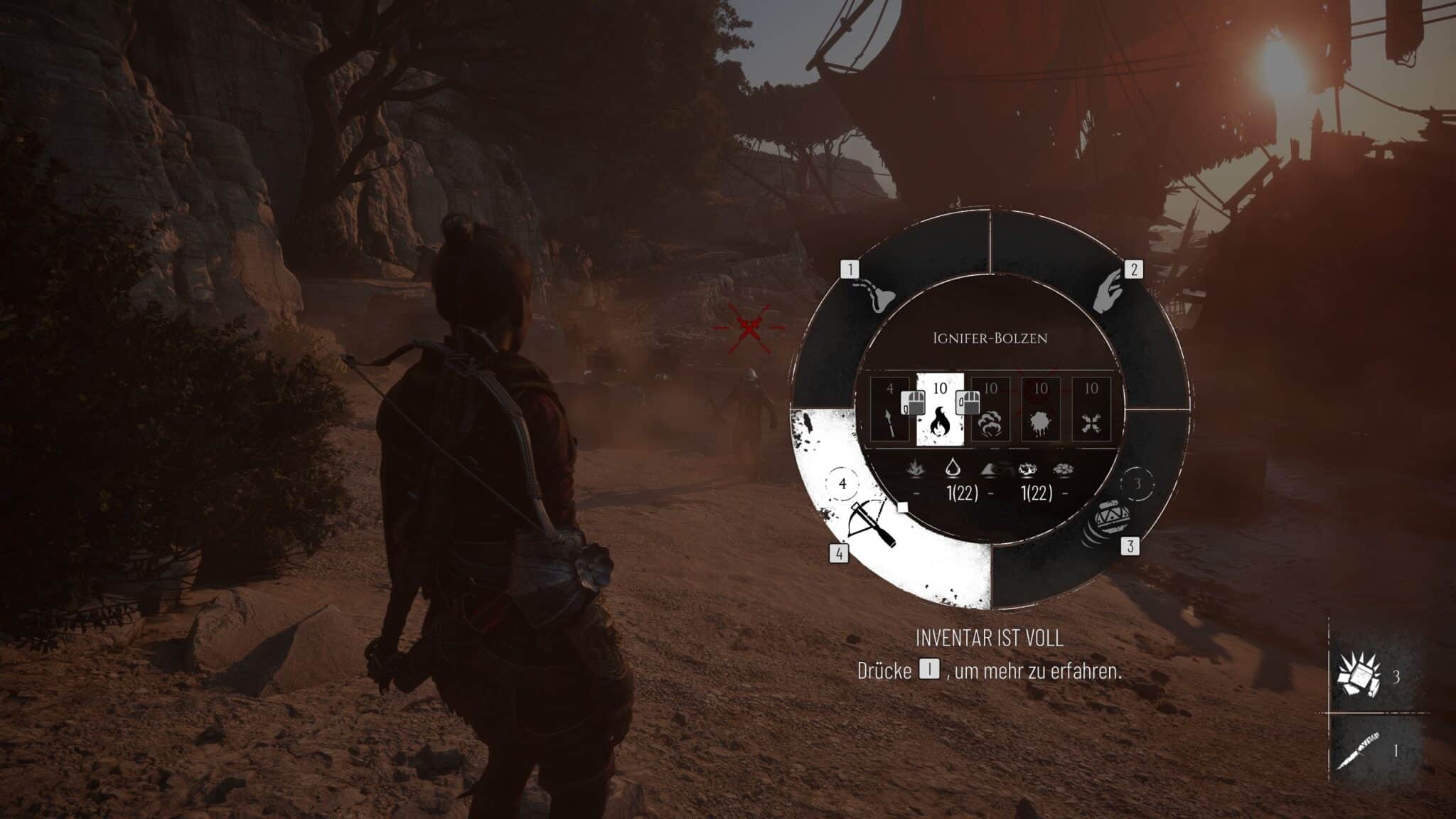
Pimp my crossbow
By far the most important collectibles in the game are the components hidden in fixed places. With them we upgrade Amicia”s carrying capacity, weapons and ammunition. If we also upgrade her tools, she no longer has to rely on found disposable screwdrivers and workbenches.
While we actively shape our character”s progress through these upgrades, our general abilities in sneaking, fighting and crafting mainly increase passively. The game constantly analyses our play style and fills up the three associated progress bars, mostly unnoticed in the background.
At given levels, we unlock up to four extremely interesting improvements that support our preferred play style. For example, the final sneak talent called “Knifewoman” allows us to silently eliminate the dreaded heavy knights.
In keeping with the name, however, we use up one of the sparsely sown disposable knives, which would alternatively also save us from charging guards or allow us to penetrate locked raw materials warehouses. The Last of Us sends its regards.
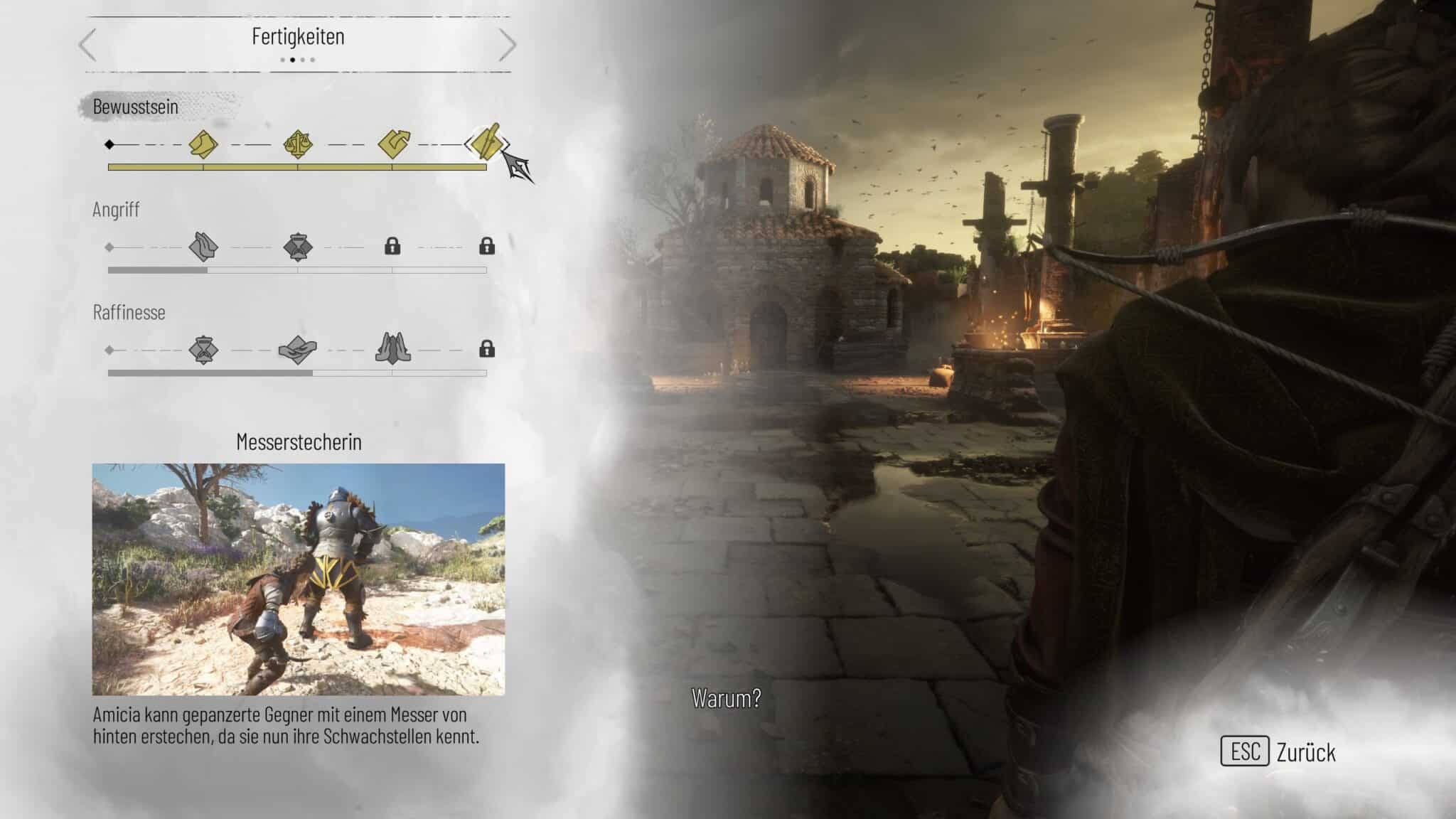
Bosses against Hugo?
The fact that every progress made really pays off becomes obvious in the second half of the game at the latest. Although our little brother has the power to command parts of the rat army and regularly shows this off in cutscenes, he is rarely of any help in the boss fights and arenas that now appear with increasing frequency.
Here you have to use Amicia”s entire repertoire, combine alchemical ammunition with the environment and with each other, use cover cleverly and apply as many of the learned mechanics as possible.
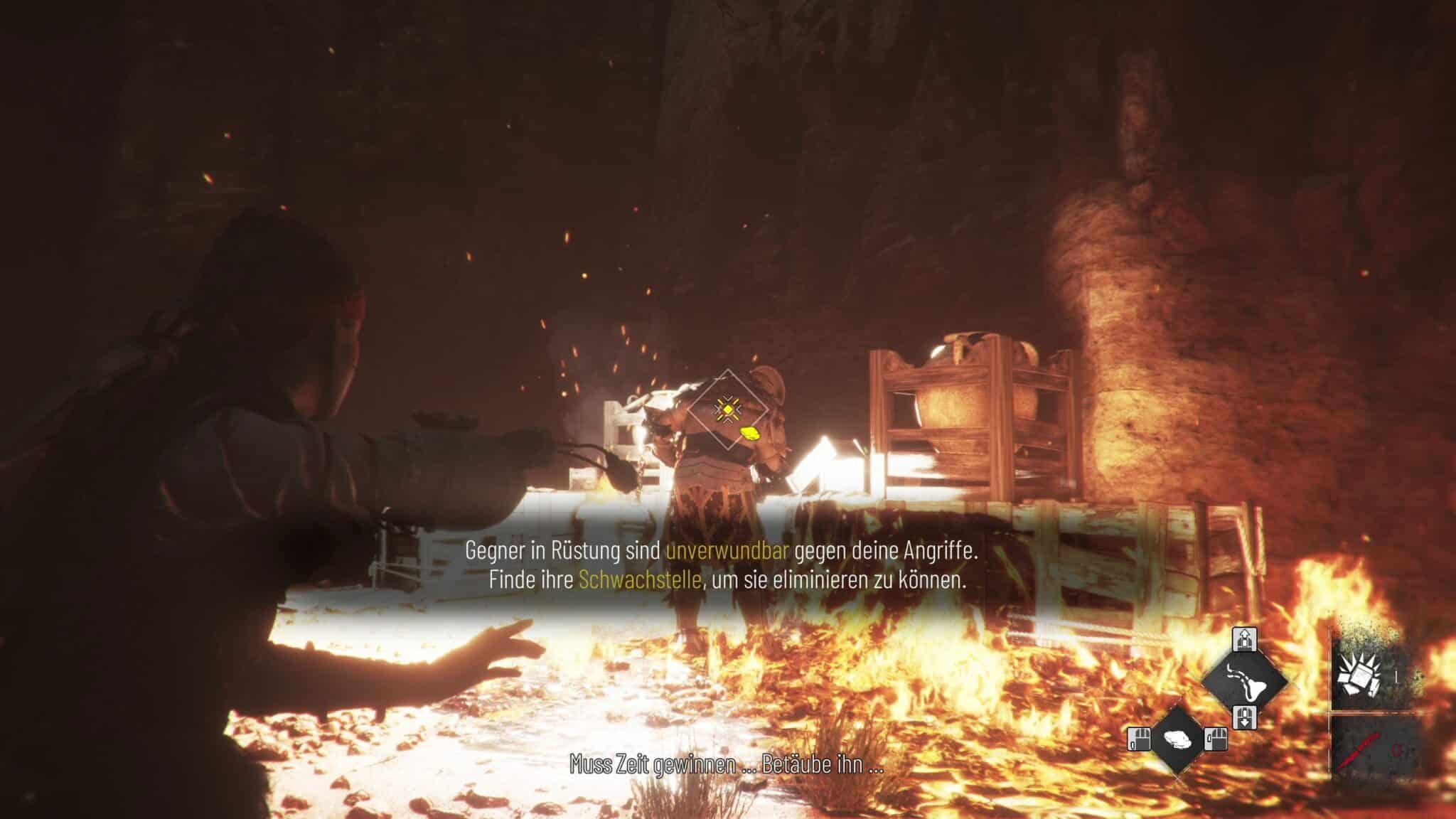
In contrast to the first part, the showdowns now seem less contrived, loosen up the flow of the game, which is otherwise characterised by extensive sneaking and exploring, and empty the mountains of resources that quiet players inevitably accumulate. However, those who would have liked to complete the entire game as inconspicuously as possible may be bothered by the inevitability of these open confrontations.
Nevertheless, the game always remains fair and should we stumble into such a battle arena unprepared, the options menu allows us to activate an invulnerability mode against humans (but not against rats or fire) as a final lifeline. Incidentally, the rare and altogether harmless quick-time events can also be switched off there.
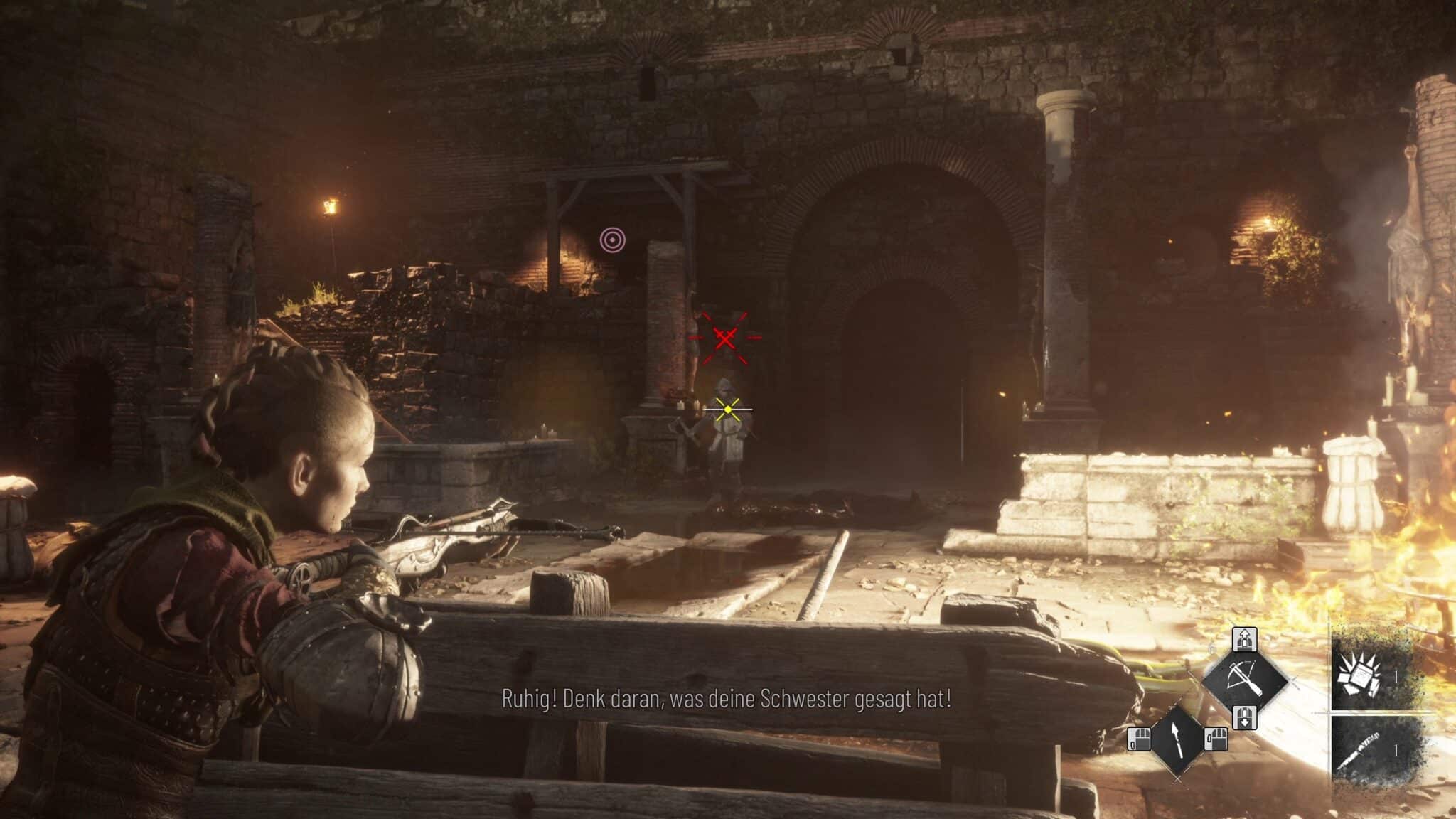
Characters at the centre
For all its gameplay bliss, Requiem never leaves us in any doubt that we are in a linear stealth adventure that uses all its facets to tell the story of its characters. Accordingly, we get to see many rousing and excellently animated cutscenes.
And what great characters they are: Every second we love and suffer along with the brother and sister; learn to both trust and distrust; feel the sting of every betrayal and loss. There are moments when the melancholy weighs so heavy it”s almost uncomfortable, and others that abruptly make us laugh along.
The relaxing exploratory walks through bustling markets and streets; the merchants who chat with us as we pass or invite us to play games of toss at their stalls; the geese, goats and chickens that make indignant sounds when they have to dodge our footsteps. All this combined with the breathtaking graphics and elegant dialogue creates a dense atmosphere that captivates us and doesn”t let go until the end credits.
If only there weren”t one or two downers that unnecessarily diminish our joy at what we have experienced. The fact that distinctive dubbing voices like that of the fantastic Katja Brügger (already heard in 1997 in the Blade Runner adventure as Crystal Steele) are used by several NPCs within a few metres of each other – forget it. The fact that you can only interact with a few objects at predefined points in front of the enchanting scenery – not so bad.
Much more noticeable is that the story seems to go round in circles at times. Too often we are promised an important piece of the mosaic at the end of a long, arduous journey, only to be sent back in the opposite direction with an interesting but ultimately unimportant morsel of information.
Of course, the constant disappointments fit into the overall narrative and the intended moral of the story, but that doesn”t change the fact that as a player you feel a little led by the nose. The developers apply masterful storytelling in the dialogues, but the actual structure, how the two fixed points from the beginning and the end were connected, ultimately feels uninspired.
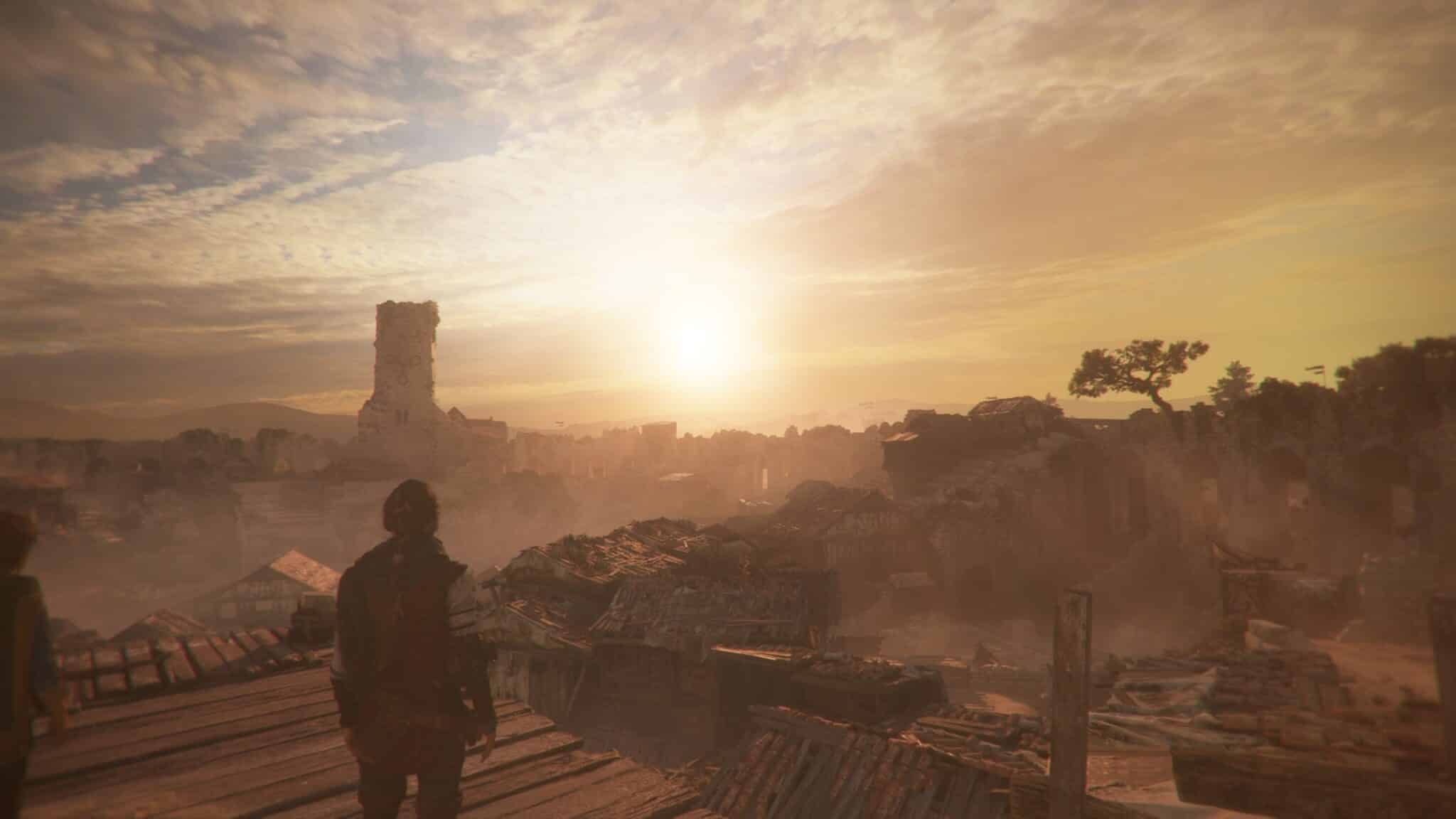
All in all, the emotional climaxes of the story nevertheless make it more than worthwhile to experience Amicia and Hugo”s roughly 20-hour journey for yourself. Such high-calibre works with an eye for believable characters are, after all, a rare commodity – especially for us spurned PC gamers who are still waiting for ports of the genre kings The Last of Us 1+2.
Editor”s Verdict
What the French Asobo Studios have delivered here truly does not need to hide from the worldwide competition. The intensity and quality of the storytelling is impressive and sucks me into the action in such a way that I immediately feel for the characters.
At the same time, the excellent stealth gameplay keeps me on the edge of my seat and confronts me with a superior force that also forces me into the role of the still vulnerable Amicia in terms of gameplay.
In this way, the developers manage to make the two halves of the game complement and reinforce each other perfectly. Since both the story and the game mechanics discourage unnecessary killing, the ludonarrative dissonance is also significantly lower than in comparable games by Naughty Dog.
However, if you choose to be much more aggressive, this balance can break down and your gameplay experience can suffer. Here you must decide for yourself to what extent you want to and can subordinate your play style to the narrative.

